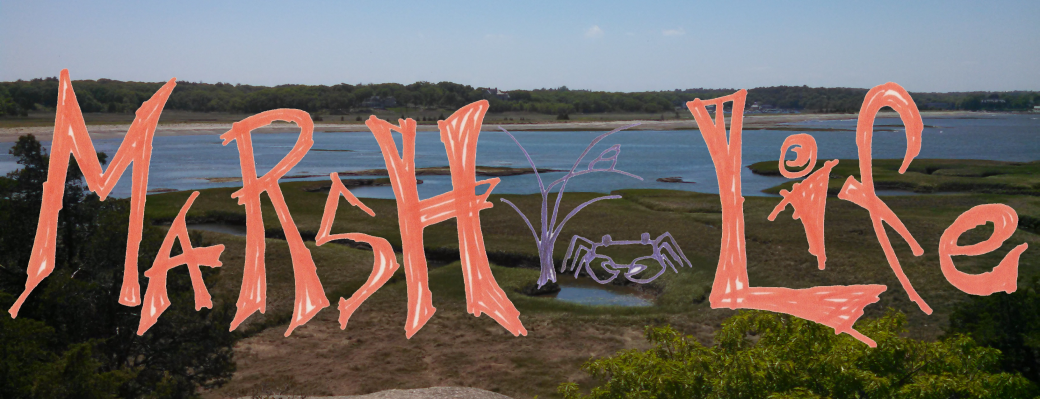If you live anywhere near the coast you may have noticed that this most recent full moon has yielded some very high tides. In fact, Morrissey Boulevard, where UMass Boston is located on the Boston harbor, had signs warning that the roads were likely going to flood on the over night high tide. Although I was simply excited to see general tidal information being displayed to the public, I realized this is the perfect opportunity to talk about what happens in a salt marsh when the tide comes up.
Salt marshes, like most coastal ecosystems, undergo a big change once or twice a day when the tide goes in and out. In a matter of hours they go from a mainly terrestrial habitat where a marsh ecologist can walk around in, providing they have Muck boots, to a completely subtidal, underwater ecosystem.
When high tide hits the marsh, a whole world of marine animals- from fish and shrimp to crabs and birds, come into the marsh creeks to take advantage of the rich resources that aren’t available before the water grants them access.
Figuring out what happens during high tide is often difficult. Some researchers use nets to catch everything that comes into the marsh at a high tide. Others use “single line sampling” which is what marine biologists call going fishing. Recently in a number of different ecosystems, researchers have been using underwater photography or videos to see what we normally can not!
So- what happens in the marsh when all of that water comes in? We put out some GoPros at the edge of the creek as the tide was coming in and this is what we saw:
In the video you can see at least 3 different fish species, as well as a crab and a lot of grass shrimp. These critters feed mainly on the algae and detritus that is on the surface of the marsh mud. Every time that the tide comes in, a new batch of algae is deposited onto the mud, providing an all you can eat buffet!


